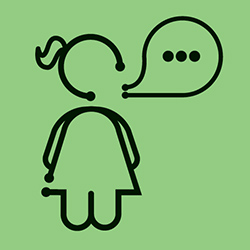Summary
Over the past few years, technology has been making strides in revolutionizing methods of learning and teaching with the support of various tools making children more focused and motivated in the coursework. Technology-enabled curriculum and smart boards have long replaced traditional blackboards and two-dimensional textbook images. A vital part of education particularly STEM, is developing an educational environment to create customized curriculum content based on the skills and abilities of the students. One of the key requirements to create effective customized curriculum content is to be able to dynamically design and create interactive educational content based on the academic goals of the particular student. To be most effective it is essential for the educational content to be of an interactive format for being able to support the needs of students with wide range of disabilities and skills.
Completed
Target Users
User Journey
 Noora is an eight-year-old student with mild learning disabilities and performs her educational tasks with the support of special ed teachers in school. She finds it difficult to concentrate on tasks for an extended period. Noora has enrolled to a new school and her special ed teacher has evaluated her ability to comprehend and retain information related to her coursework. The special aid teacher concludes that Noora will be requiring to be provided with customized curriculum content to help her learn in the most engaging manner and achieve academic success to the best of her potential.
Noora is an eight-year-old student with mild learning disabilities and performs her educational tasks with the support of special ed teachers in school. She finds it difficult to concentrate on tasks for an extended period. Noora has enrolled to a new school and her special ed teacher has evaluated her ability to comprehend and retain information related to her coursework. The special aid teacher concludes that Noora will be requiring to be provided with customized curriculum content to help her learn in the most engaging manner and achieve academic success to the best of her potential.
1
Noora’s special ed teacher selects an academic goal to be achieved for the week.
2
The teacher launches an educational app on the tablet to create customized learning content for Noora.
3
Based on Noora’s academic goal and her attention & information retention skills, the special ed teacher creates some interactive educational exercises for STEM using the app.
4
Noora is provided with the tablet having the configured customized educational exercises.
5
With relevant guidance from the teacher, Noora is able to compete the exercises to the best of her potential and accomplish her academic goal.
6
By the end of each exercises, the app generates an automated report reflecting various aspects of Noora’s response (e.g. engagement & response time, interpretational level, task comprehension, etc.).
Potential Service Features
- Dynamic creation of Interactive Educational Content based on student’s IEP, strength, weakness, skills and attitude.
- Processing of Analytical data based reflecting progress of student.
Touch Points
Issue Statement
As a person with mild learning disability, Noora is unable to stay engaged with coursework for an extended period without being distracted. She needs to be presented with customized curriculum content where information is provided using alternative approaches based on her comprehension and retention skills.
Expected Key Benefits
Automated Reporting Tool of Student’s Skill Progression
Automated Reporting of student’s skill to perform IEP activities – engagement & response time, interpretational level, task comprehension, etc.
Contextual Information Delivery
Based on the student’s reading, observation, and comprehension skills relevant contextual information can be delivered to meet educational goal set by the special ed teacher.
Audience Expansion
Potentially enrich curricular content by developing resources in interactive and engaging format like AR/VR and expand the learning experiences of students.
Implementation Analysis
Implementation Timeline
![]()
Low
Medium
High
Technology Commercial Viability
![]()
Available Now
Viable in Short Term
Viable in Long Term
Investment Requirements
![]()
Low
Medium
High
Key Implementation Considerations
1
Development of portable hardware to integrate braille cells, scanner and OCR technology.
2
Management of User Privacy Information.
3
Intuitive User Interface
